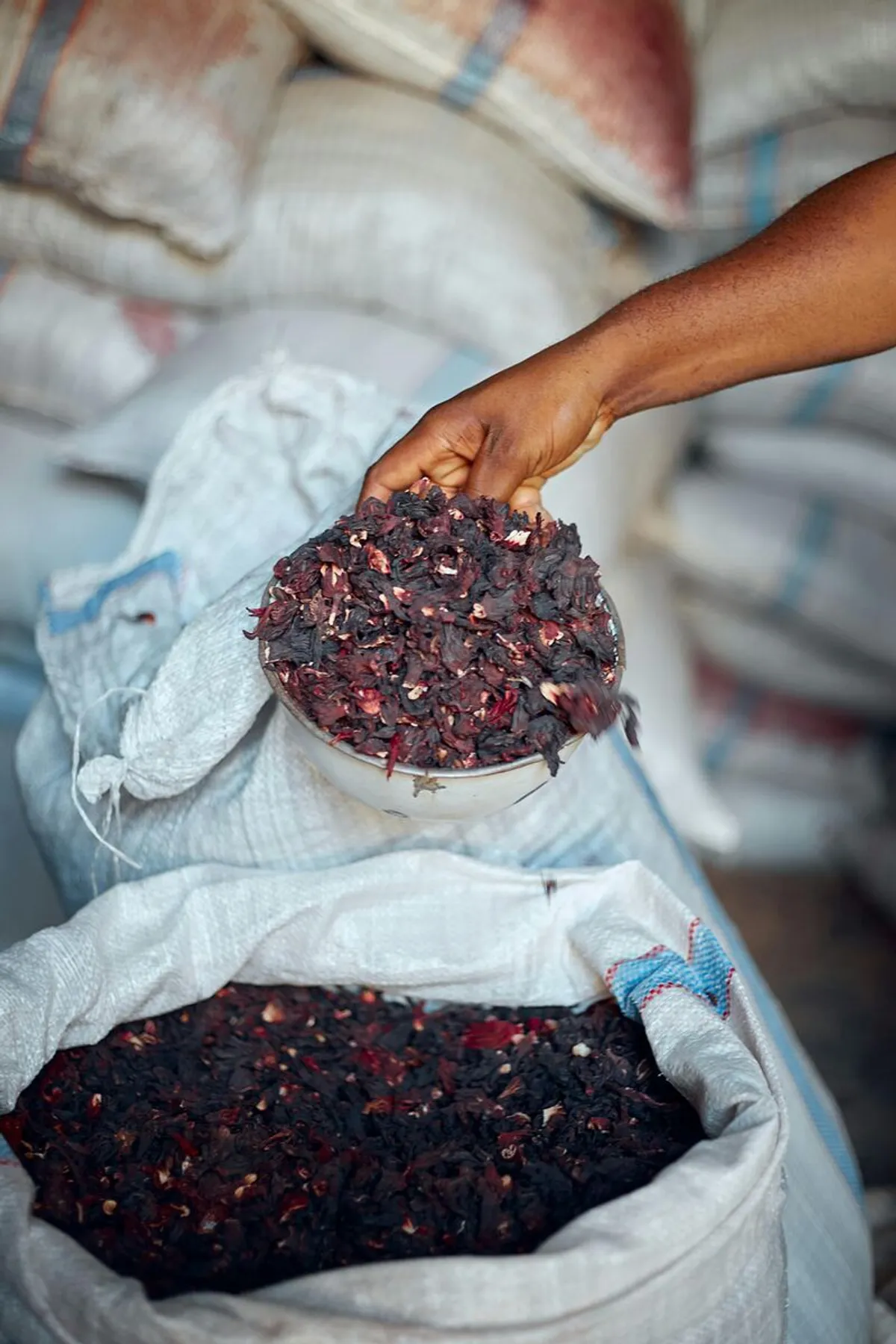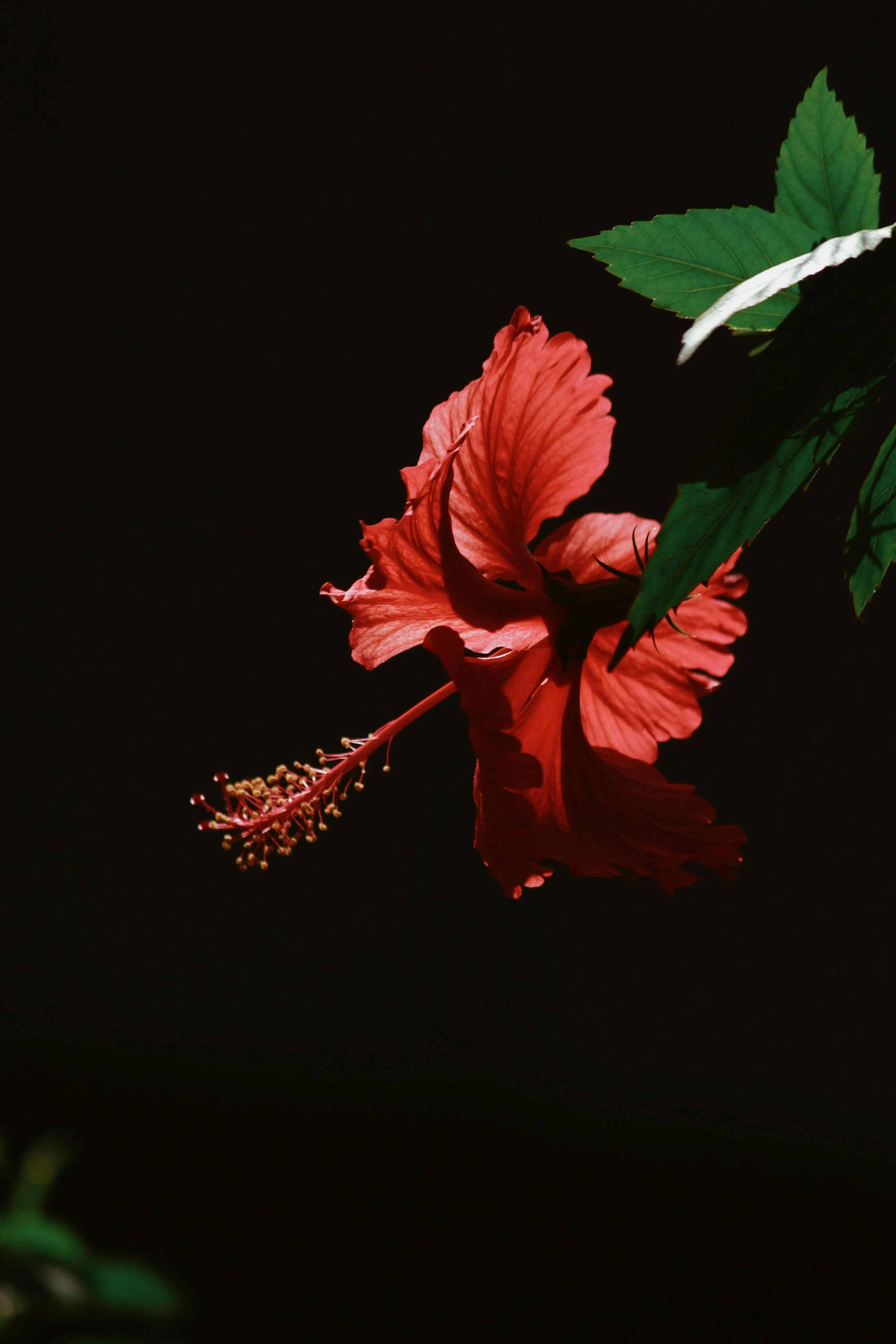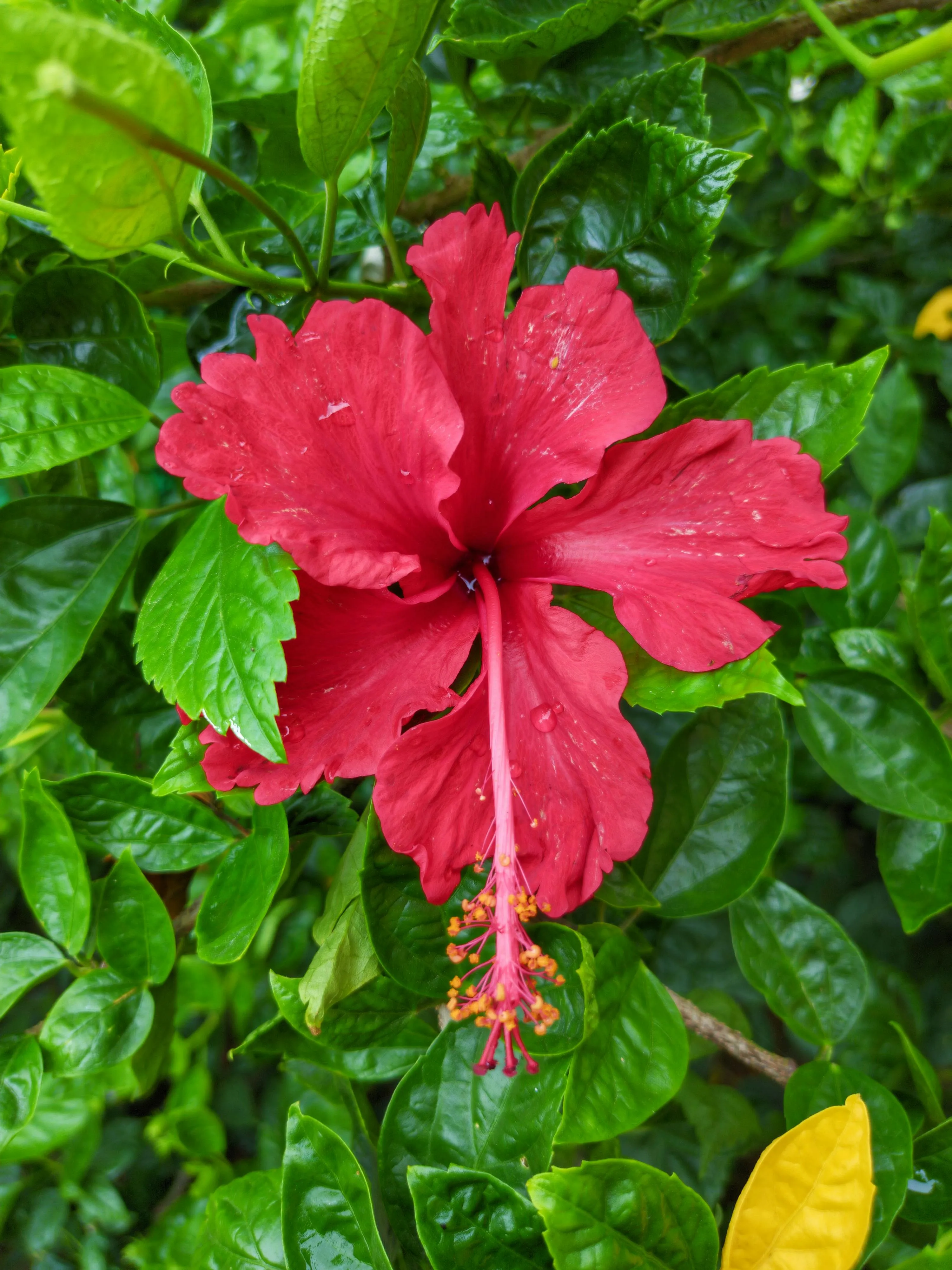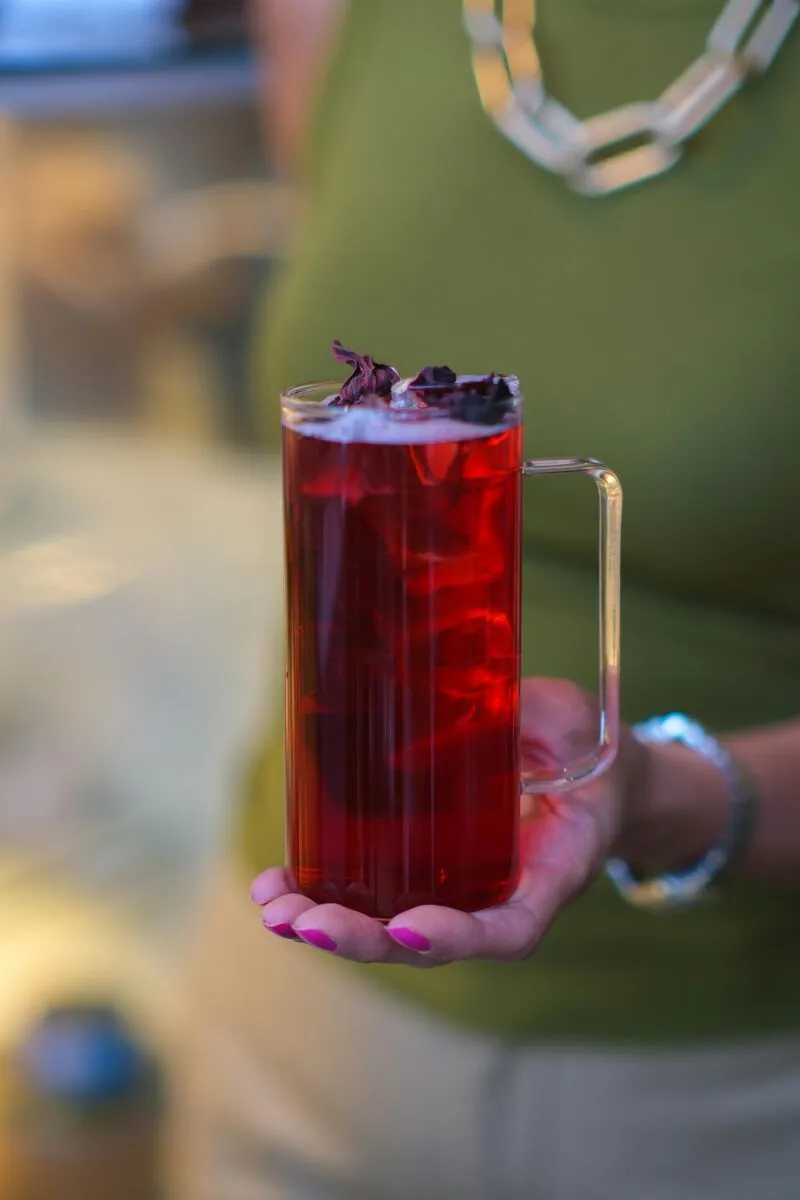
The Ultimate Guide to Hibiscus Tea (And a Super Simple Recipe)
You’ve probably seen its electric, ruby-red color in photos or at your favorite café. Hibiscus tea is a drink that’s as beautiful as it is refreshing, with a tart, cranberry-like flavor that can be enjoyed hot or cold.
But this stunning beverage is more than just a pretty drink. It’s a global tradition, packed with potential health benefits and incredibly easy to make right in your own kitchen. Whether you’re looking for a caffeine-free pick-me-up or a refreshing iced tea for a hot day, this is one recipe you’ll want to keep on hand.
Let’s dive into everything you need to know about hibiscus tea.

What Exactly Is Hibiscus Tea?
First things first: this isn’t a tea made from the common hibiscus flowers you see in garden beds. True hibiscus tea is an herbal infusion made from the dried calyces (the protective leaves around the flower) of the Hibiscus sabdariffa plant, also known as roselle.
While its scientific name is a mouthful, its common names are a trip around the world:
- Agua de Jamaica in Mexico and Central America
- Zobo or Tsobo in Nigeria
- Bissap in Senegal and West Africa
- Karkadé in Egypt and Sudan
- Sorrel in the Caribbean
No matter what you call it, the bright, tangy flavor is universally loved and serves as a base for countless delicious variations.

Potential Health Benefits of Hibiscus Tea
One of the best things about hibiscus tea is that it may be as good for you as it is delicious. For centuries, it’s been used in traditional medicine, and modern science is starting to back up some of those claims.
- Packed with Antioxidants: Hibiscus is loaded with powerful antioxidants like Vitamin C and polyphenols. These compounds help fight off damage from free radicals in the body, which can contribute to aging and chronic diseases.
- May Support Heart Health: Several studies have suggested that hibiscus tea may help lower both systolic and diastolic blood pressure. Some research also indicates it might help reduce “bad” LDL cholesterol and triglycerides, making it a heart-friendly choice.
- Could Promote Liver Health: Your liver is essential for detoxifying your body, and some studies show that hibiscus extract may help protect liver cells from damage and improve overall liver function.
(Disclaimer: While hibiscus tea is a healthy beverage, it’s not a substitute for medicine. If you have a health condition or are on medication, especially for high blood pressure, consult with your doctor before making it a regular part of your routine.)

How to Make Hibiscus Tea: A Simple Recipe
Ready to brew your own? Forget complicated instructions. This is one of the easiest and most rewarding drinks you can make. The cold-brew method is especially forgiving and perfect for a rich iced tea.
Yields: 4 cups (1 quart) Prep time: 5 minutes Steep time: 20 minutes to overnight
Ingredients
1/4 cupdried hibiscus flowers4 cupscold, filtered water- Optional for serving: Sweetener (honey, agave, sugar), fresh mint leaves, lime or lemon slices.
Instructions
- Combine: Place the
1/4 cupof dried hibiscus flowers in a 1-quart jar or pitcher. Pour the4 cupsof cold water over them. - Steep: Give it a quick stir. Cover and place in the refrigerator to steep. For a light flavor, steep for at least 20-30 minutes. For a rich, deep red color and bold flavor, let it steep for a few hours or even overnight.
- Strain: Pour the tea through a fine-mesh strainer into a clean pitcher to remove the hibiscus flowers.
- Serve: Serve the hibiscus tea over ice. If you prefer it sweet, stir in your sweetener of choice until it dissolves. Garnish with a sprig of fresh mint or a squeeze of lime.
Want it hot? Simply pour 1 cup of boiling water over 1 tablespoon of dried hibiscus flowers. Let it steep for 5 minutes, strain, and enjoy.
Easy Ways to Customize Your Tea
The simple recipe above is a perfect canvas for creativity. Try these variations:
- The Spicy One: Add a cinnamon stick, a few whole cloves, or a few thin slices of fresh ginger to the pitcher while your tea is steeping.
- The Fizzy One: Make your tea extra strong by using a little less water. Pour it over ice, filling the glass halfway, and top it off with sparkling water for a refreshing spritzer.
- The Tropical One: Add a splash of pineapple juice or orange juice to your finished tea for a fruitier, sweeter flavor.
Whether you enjoy it warm on a cool evening or iced on a summer afternoon, hibiscus tea is a delightful tradition worth adopting.

Related Articles
Continue exploring with these related gardening articles.

8 Essential Tips for a Thriving Indoor Garden: Your First Steps
Transform your home into a year-round growing paradise. Learn the 8 proven strategies for creating a successful indoor garden that produces fresh herbs, vegetables, and greens regardless of season or outdoor space.

A Guide to 5 Delicious Passiflora Fruits You Can Grow at Home
Discover 5 amazing varieties of Passiflora Fruits you can grow at home! From cold-hardy Maypops to giant tropical granadillas, learn which Passiflora fruits thrive in your climate zone.

7 Reasons Why Phipps Conservatory Is a Must-Visit in Pittsburgh
Discover why Phipps Conservatory in Pittsburgh is a must-see destination. From stunning Victorian glasshouses to world-class plant collections and innovative green design, explore 7 compelling reasons to visit this botanical paradise.
Test Your Garden Knowledge
Challenge yourself with interactive quizzes about plants, gardening, and botanical knowledge.
How Well Do You Know Your Passiflora Fruits?
Test your knowledge of the different types of Passiflora fruits and their growing zones with this fun and informative quiz.
Take QuizCan You Identify These Common Garden Plants? Test Your Plant Knowledge
Think you know your roses from your peonies? Test your plant identification skills with our comprehensive garden plant quiz featuring 10 challenging questions.
Take Quiz